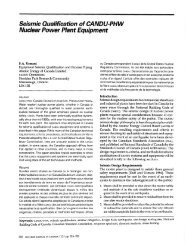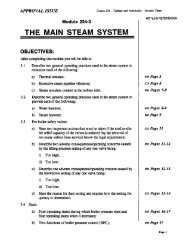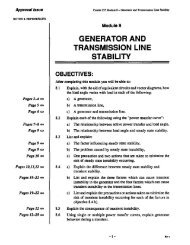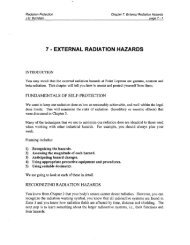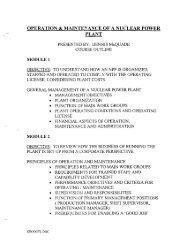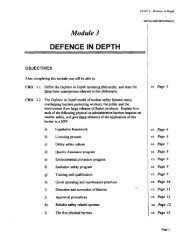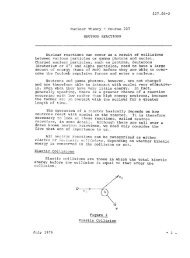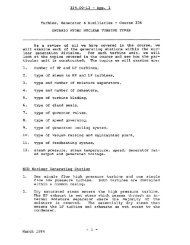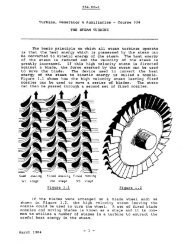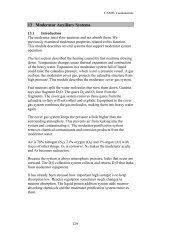Reactor Control Systems of Qinshan Phase III CANDU ... - canteach
Reactor Control Systems of Qinshan Phase III CANDU ... - canteach
Reactor Control Systems of Qinshan Phase III CANDU ... - canteach
You also want an ePaper? Increase the reach of your titles
YUMPU automatically turns print PDFs into web optimized ePapers that Google loves.
During normal operation, the setpoint is calculated by the steam generator pressure<br />
control system to maintain constant steam pressure in the steam generator. During<br />
serious plant upsets, RRS provides controlled or fast power reduction automatically.<br />
RRS also responds to operator manual request for reactor power reduction or shutdown.<br />
The reactor regulating system is composed <strong>of</strong> input sensors (ion chambers, in-core flux<br />
detectors and process measurements), reactivity control devices (adjusters, light water<br />
zone controllers, mechanical control absorbers), hardware interlocks and display devices.<br />
<strong>Reactor</strong> Regulating System action is generally initiated by digital control computer (DCC)<br />
programs which process the inputs and drive the appropriate reactivity control and<br />
display devices.<br />
Functional Requirements<br />
a) To provide automatic control <strong>of</strong> reactor power to a setpoint at any power level<br />
between 10 -6 FP and Full Power as specified by the operator (ALTERNATE mode)<br />
or to the power level required to maintain steam pressure in the steam generators<br />
(Normal mode).<br />
b) To maneuver reactor power at controlled rates between any two power levels in the<br />
automatic control range (above 10 -6 FP).<br />
c) To insert or to remove reactivity devices at controlled rates to maintain a reactivity<br />
balance in the core. These devices compensate for variations in reactivity arising from<br />
changes in xenon concentration, fuel burnup, moderator poison concentration, or<br />
reactor power.<br />
d) To maintain the neutron flux distribution close to its nominal design shape, so that the<br />
reactor can operate at full power without violating bundle or channel power limits.<br />
The demand power routine computes the desired reactor power setpoint and compares it<br />
with the measured bulk power to generate a bulk power error signal that is used to<br />
operate the reactivity device.<br />
The primary reactivity control devices are the 14 liquid zone control absorbers. The<br />
reactivities inserted by the zone control absorbers are varied in unison for bulk power<br />
control or differentially for tilt control. If the reactivity required to maintain reactor flux<br />
power at its specified setpoint exceeds the capability <strong>of</strong> the liquid zone control system,<br />
the reactor regulating system programs call on the other reactivity devices. Adjusters are<br />
removed for positive reactivity shim. Negative reactivity is provided by the mechanical<br />
control absorbers or by poison addition to the moderator. The movement <strong>of</strong> these devices<br />
is controlled by average liquid zone controller level and the effective power error.<br />
In addition to controlling reactor power to a specified setpoint, the <strong>Reactor</strong> Regulating<br />
System performs the function <strong>of</strong> monitoring a number <strong>of</strong> important plant variables, and<br />
reducing the reactor power, when any <strong>of</strong> these variables exceed specified limits. This<br />
CJNPE_paper990401<br />
11/21/05<br />
6




